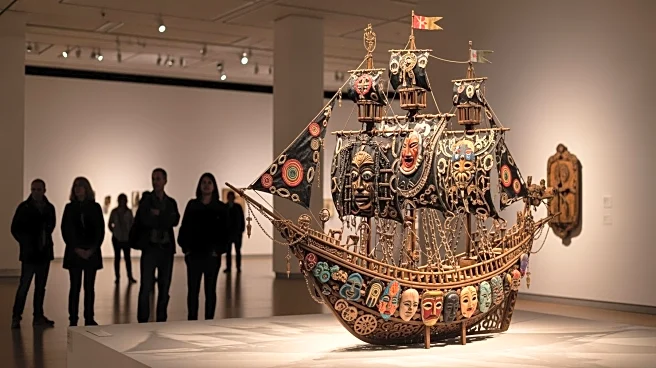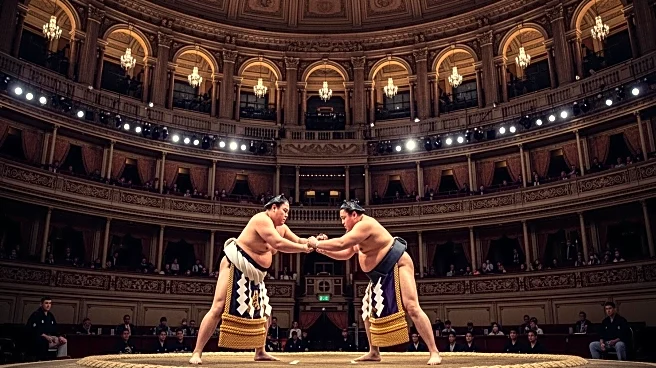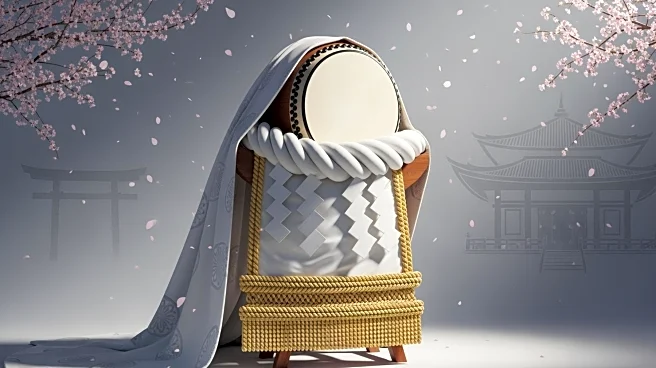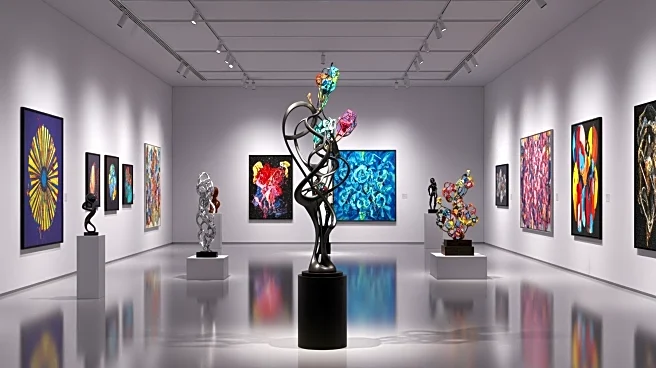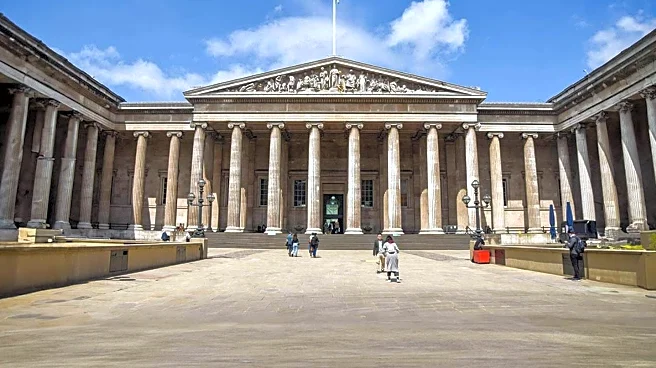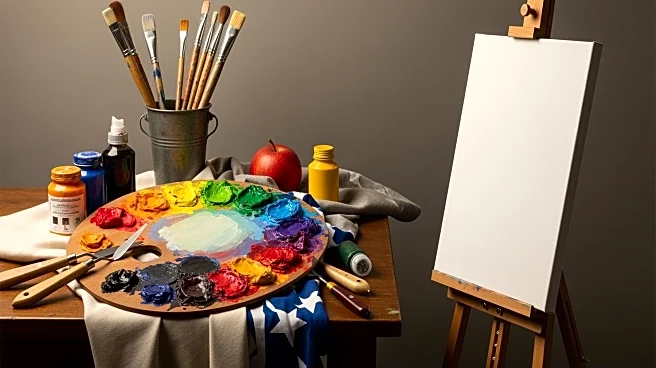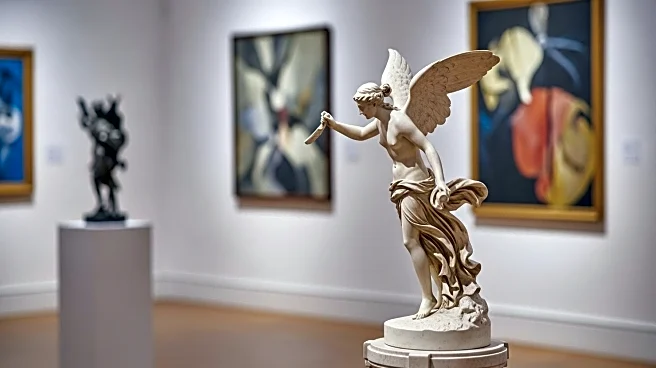What's Happening?
Artist Hew Locke's exhibition 'Passages' at the Yale Center for British Art is his most comprehensive show to date, featuring 49 works that delve into the complexities of empire, identity, and migration.
The exhibition includes photography, sculpture, and drawing, curated by Martina Droth. Locke, a Guyanese British artist, uses symbolism and found objects to explore the history of the British Empire and its impact on identity. His works often reflect on the power of symbols and their connection to cultural identity, drawing from his experiences in Guyana and the UK.
Why It's Important?
Locke's exhibition is significant as it brings attention to the historical and cultural narratives surrounding the British Empire, prompting viewers to reflect on the legacy of colonialism and its ongoing impact. By using art to explore these themes, Locke contributes to the broader discourse on identity and cultural heritage, encouraging audiences to consider the complexities of history and its influence on contemporary society. The exhibition also highlights the role of art in addressing social and political issues, offering a platform for dialogue and reflection.
What's Next?
The exhibition is on view through January 2026, providing an opportunity for continued engagement with Locke's work and the themes it addresses. As audiences interact with the exhibition, it may inspire further discussions on the role of art in examining historical narratives and cultural identity. Locke's work could also influence other artists and institutions to explore similar themes, potentially leading to new exhibitions and projects that address the complexities of empire and identity.
Beyond the Headlines
Locke's exhibition raises questions about the representation of historical figures and monuments, challenging viewers to reconsider the narratives associated with public symbols. It also highlights the importance of cultural sensitivity and awareness in art, emphasizing the need for diverse perspectives in the interpretation of history and identity.
